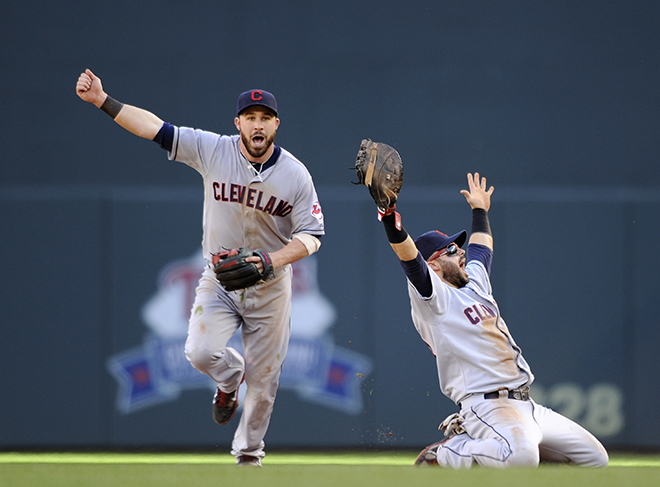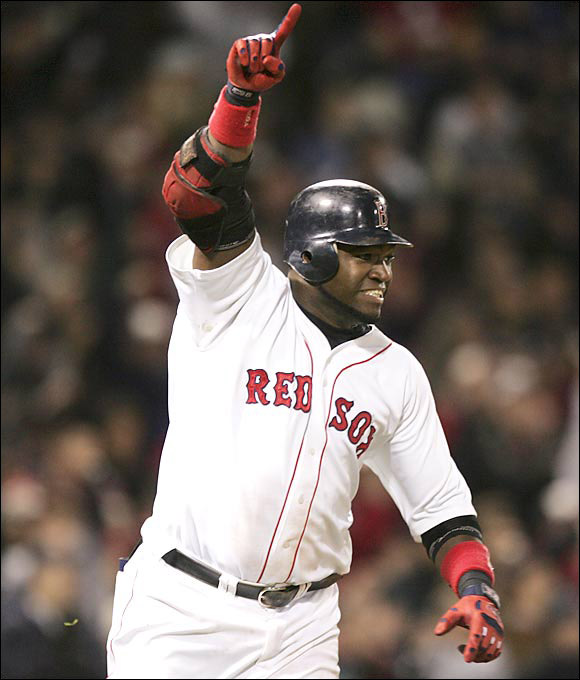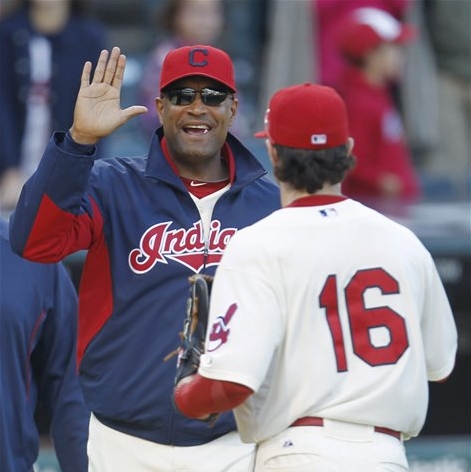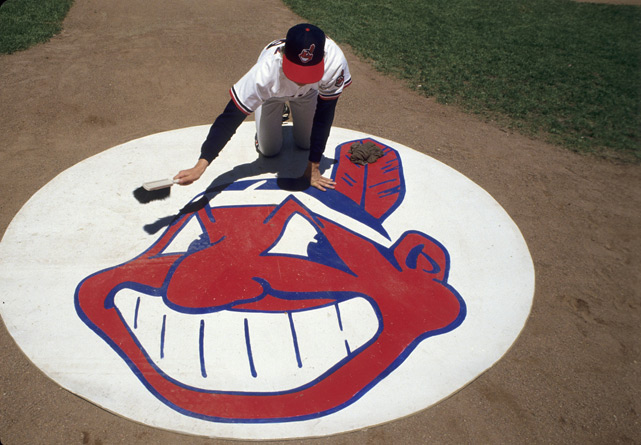 A few weeks ago, when the playoffs were anything but assured, someone on twitter asked whether or not Pauly C. and I would combine for a joint, mega-edition of Lazy Sunday if the Indians made the playoffs. Well wouldn’t you know it, but the wi-fi down in Del Boca Vista was working this week, and what started out as an innocent e-mail exchange turned into what you see before you here today. We’re heading into the most important offseason for the Indians since the winter of 2007-08, when the 96-win Indians took the Red Sox to the brink of elimination in the ALCS, falling just one game short of a World Series berth (and eventual win over the Rockies, and no one will ever convince me otherwise). That club made only minor tweaks to what we all thought was a pretty solid roster, then promptly went out and fell flat on their faces in 2008, stumbling so badly that reigning Cy Young winner C.C. Sabathia was dealt in early July. Even a 22-3 (167 ERA+!) season from Cliff Lee couldn’t save that club. There’s a lot of pressure on Chris Antonetti and company to avoid a similar fate in 2014, as the Cleveland fanbase has shown an unwillingness to trust the front office and ownership group despite a playoff* season in 2013. So with that level of gravity established, it is with great pride that I bring to you the return of THE DiaTribe, The Westside Kid, the biggest Pat Tabler fan outside of the Tabler family…that’s right, none other than Paul Cousineau himself! Time and schedule permitting, Pauly and I will try and get together for a little offseason miniseries, so consider this installment one of several still to come in the fall/winter months ahead.
A few weeks ago, when the playoffs were anything but assured, someone on twitter asked whether or not Pauly C. and I would combine for a joint, mega-edition of Lazy Sunday if the Indians made the playoffs. Well wouldn’t you know it, but the wi-fi down in Del Boca Vista was working this week, and what started out as an innocent e-mail exchange turned into what you see before you here today. We’re heading into the most important offseason for the Indians since the winter of 2007-08, when the 96-win Indians took the Red Sox to the brink of elimination in the ALCS, falling just one game short of a World Series berth (and eventual win over the Rockies, and no one will ever convince me otherwise). That club made only minor tweaks to what we all thought was a pretty solid roster, then promptly went out and fell flat on their faces in 2008, stumbling so badly that reigning Cy Young winner C.C. Sabathia was dealt in early July. Even a 22-3 (167 ERA+!) season from Cliff Lee couldn’t save that club. There’s a lot of pressure on Chris Antonetti and company to avoid a similar fate in 2014, as the Cleveland fanbase has shown an unwillingness to trust the front office and ownership group despite a playoff* season in 2013. So with that level of gravity established, it is with great pride that I bring to you the return of THE DiaTribe, The Westside Kid, the biggest Pat Tabler fan outside of the Tabler family…that’s right, none other than Paul Cousineau himself! Time and schedule permitting, Pauly and I will try and get together for a little offseason miniseries, so consider this installment one of several still to come in the fall/winter months ahead.
Indians  Indians Archive
Indians Archive
 Indians Archive
Indians Archive
More Articles...
- NBA Announces 2013-2014 Schedule
- Browns Ink Sharknado
- Sharknado A No-Show For Rookie Camp
- Trent Richardson Out Until Training Camp
- Browns Sign Brandon Jackson
- Carrasco Suspended Eight Games
- Browns Add to Wide Receiver Depth with David Nelson
- Browns Need to Learn from Past Draft Mistakes
- Browns Release Chris Gocong and Usama Young
- Browns Missing on Grimes Disappointing, But Not The End
The TCF Forums
- Devone Bess
Spin (Tuesday, January 21 2014 5:35 PM) - 2014 Recruiting
jclvd_23 (Tuesday, January 21 2014 4:38 PM) - 2015 Recruiting
mattvan1 (Tuesday, January 21 2014 4:07 PM) - Official- Browns Coach Search/Rumors
googleeph2 (Tuesday, January 21 2014 3:42 PM) - Movies coming out
rebelwithoutaclue (Tuesday, January 21 2014 12:56 PM) - The 2014 Offseason Thread
Larvell Blanks (Tuesday, January 21 2014 12:25 PM) - Chris Grant's first 3 drafts
Kingpin74 (Tuesday, January 21 2014 10:13 AM) - Mike Brown
YahooFanChicago (Monday, January 20 2014 11:15 PM) - 2014 Hoops Hockey Hijinx
jpd1224 (Monday, January 20 2014 4:44 PM) - Wish List - #4 Pick
Hikohadon (Monday, January 20 2014 1:26 PM)



 Over the past decade, and really dating back to the early days of
Over the past decade, and really dating back to the early days of  Traditionally, teams not in the MLB Playoffs shy away from making big headline news-type announcements during the MLB Playoffs. Out of respect for the game and the teams still playing, let the games being played on the field garner the headlines.
Traditionally, teams not in the MLB Playoffs shy away from making big headline news-type announcements during the MLB Playoffs. Out of respect for the game and the teams still playing, let the games being played on the field garner the headlines. Chief Wahoo has been the face of Cleveland baseball for more than 60 years. Originally designed in 1947 by 17-year-old draftsman Walter Goldbach, Wahoo was the brainchild of former Tribe owner Bill Veeck, one of the greatest marketers baseball has ever seen.
Chief Wahoo has been the face of Cleveland baseball for more than 60 years. Originally designed in 1947 by 17-year-old draftsman Walter Goldbach, Wahoo was the brainchild of former Tribe owner Bill Veeck, one of the greatest marketers baseball has ever seen. Frankly, it's probably better when they just leave our name out of it. We used to blame it on ESPN, but it's probably fair, at this point, to just paint the national media with one broad stroke. Be it the "Worldwide Leader", NFL Network, Mad Dog Radio, or whatever other outlets engage in building their news stories around TMZ-type narratives, I find myself screaming "UNCLE!" so much more often than I used to. Narratives, oh stupid narratives, why does the media seem to think we need you?
Frankly, it's probably better when they just leave our name out of it. We used to blame it on ESPN, but it's probably fair, at this point, to just paint the national media with one broad stroke. Be it the "Worldwide Leader", NFL Network, Mad Dog Radio, or whatever other outlets engage in building their news stories around TMZ-type narratives, I find myself screaming "UNCLE!" so much more often than I used to. Narratives, oh stupid narratives, why does the media seem to think we need you?